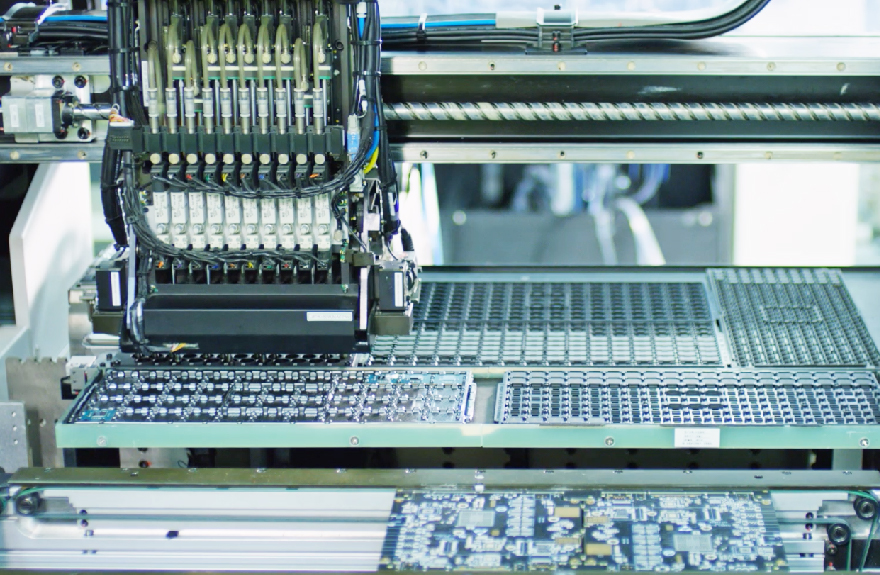Pcb Manufacturing Incoming Material Inspection
I.PCB size and appearance inspection
PCB dimension testing mainly includes the diameter, spacing and tolerances of machining holes and the small size of PCB edge.Appearance defect detection mainly includes solder mask and pad alignment,whether there are impurities, stripping and wrinkling and other abnormal conditions in solder mask , whether the benchmark mark is qualified, whether the width (line width) and spacing of the circuit conductor meet the requirements, and whether there are residual layers in the multilayer plate.In practical application, PCB appearance test equipment is often used for testing.Typical devices are mainly composed of computer, automatic workbench image processing system and so on.This system can detect the inner and outer layers of multiple panels, single/double panels, and the base drawing film be inspected, and can detect broken lines, layering, scratches, pinholes, line width, line spacing, rough edges and large area defects.

2. PCB warping and distortion detection
Unreasonable design and improper processing may lead to pcb warpage. The test method is specified in ipc-tm650 and other standards.The testing principle is as follows: the tested PCB is exposed to the representative thermal environment of the assembly process, and thermal stress is tested.Typical thermal stress test method is rotating immersion test and solder float test, in this kind of test method, dipping PCB must stay in the molten solder for a period, then remove for warp and distortion test .PCB warp artificial measurement method is: let PCB three Angle close to the desktop, and then measuring the distance of the fourth Angle from desktop.This method can only be used for rough estimation, and there are more effective methods such as corrugated photography.The wavy image method is: place a light of 100 lines per inch on the PCB under test, and set a standard light source at an incident Angle of 45 "above the light shed to the PCB. The light will generate the light shed image on the PCB, and then use a CCD camera to observe the light shed image directly above the PCB (0").At this point, the interference fringe generated between the two awnings can be seen on the entire PCB. This fringe shows the offset in the z-axis direction. Count the number of fringe to calculate the offset height of the PCB, and then convert it into warpage by calculation.
3.Three, PCB weldability test
PCB solderability testing focuses on pad and plating through hole testing. Ipcs-804 and other standards specify PCB solderability testing methods, including edge dip testing, rotary dip testing and solder bead testing.The edge dip test is used to test the solderability of the surface conductor, the rotary dip test and the wave crest test are used to test the solderability of the surface conductor and the electric through hole, and the solder bead test is only used to test the solderability of the electric through hole.
4. PCB solder mask integrity test
In the SMT process, PCB generally adopts dry solder mask and optical imaging solder mask, which have high resolution and immobility.The dry solder mask is pressed on the PCB under the action of pressure and heat. It requires clean PCB surface and effective lamination process, which has poor viscosity on the surface of tin-lead alloy. Under the thermal stress impact generated by reflow welding peeling and breaking from the surface of PCB . This kind of solder mask is also brittle.In addition, under the action of cleaning agent may also produce physical and chemical damage.In order to prevent these potential defects of dry solder mask, PCB should be subjected to strict thermal stress test during incoming material inspection.This kind of detection mostly uses the solder floating test, the time is about 10 ~ 15, the solder temperature is about 260 ~ 288℃.The phenomenon of stripping of solder mask is not observed in the test, PCB specimens can be immersed in water after the test, the capillary action of water between the solder mask and the PCB surface was used to observe the peeling phenomenon.PCB specimens can also be immersed in SMA cleaning solvent after the test to observe whether there is a physical and chemical interaction with the solvent.
5. Internal defect detection of PCB
The detection of PCB internal defects usually adopts the technique of microsection, and the specific detection method is specified in relevant standards such as ipc-tm-650.PCB is examined by micro section after solder floating thermal stress test. The main test items are the thickness of copper and tin-lead alloy coating, the alignment between conductor layers, interlayer gap and copper crack, etc.
GLOBAL WELL TECH LIMITED is a competitive China medical electronic pcba processing-automatic immune analyzer OEM manufacturer, supplier and vendor, you can get quick turn medical electronic pcba processing-automatic immune analyzer production prototypes and samples from our factory.
Article keywords :Pcb,Manufacturing,Incoming,Material,Inspection,I.PCB,size,


 2021-07-26 06:01:43
2021-07-26 06:01:43 

